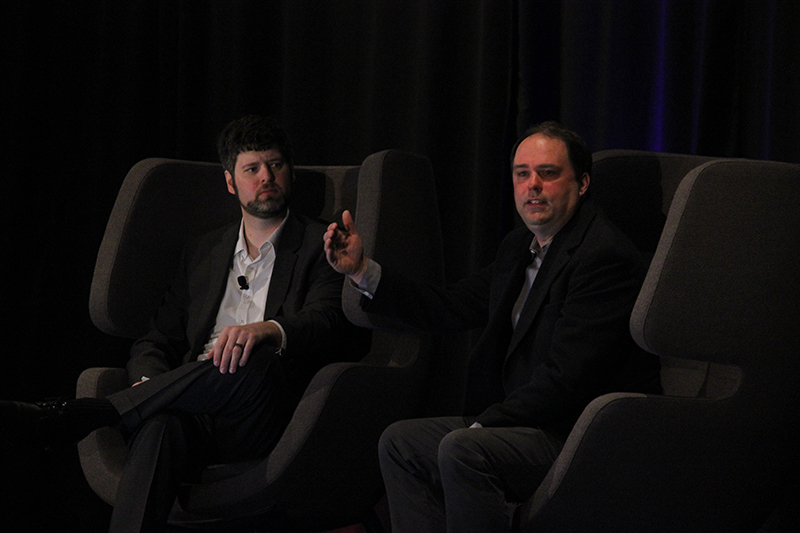“It’s the very earliest innings of on-demand food delivery,” says Christopher Payne, COO of DoorDash, the third-party restaurant delivery service that is now in 60 markets and 600 cities and is about to blow up to three times that, he said during an on-stage interview at the debut Food on Demand Conference in Dallas today.
“Door Dash is a 4 ½-year-old company, so we have a long way to go,” Payne said in response to questions from Food On Demand’s Deputy Editor Tom Kaiser. Many of the restaurant brands they deliver for “have been around for decades. It’s going to take us a long time to cover all the geography.”
DoorDash started at Stanford University when founder Tony Xu went door-to-door at campus restaurants and talked to them about how to add incremental revenue via delivery. The firm just received a $535-million cash infusion led by SoftBank, the Japanese firm that also bought a 15 percent stake in Uber/Uber Eats in January.
Payne called the investment “an endorsement, if you will, about the viability, the size and shape of this space. We’re very excited about what it represents in terms of being able to accelerate into this chapter.”
What will DoorDash use the money for, Kaiser asked? “No surprise, growth will be one of the top uses of that money, in a few different forms,” with the first push being geographic growth. “We’re in 600 cities now. Our goal is to triple that to 1,800 cities by the end of the year. That’s going to be very hard,” Payne said, but they are “very excited to be able to do that.”
Kaiser asked Payne if DoorDash is profitable, as many people wonder in the fledgling delivery space. “On the one hand, no,” Payne said, noting that they’re still in the investment stage and in newer markets, such as Tucson, Arizona, and Louisville, Kentucky, where they entered recently, they lose money at first. However, in Silicon Valley, L.A., Orange County, Houston and Atlanta, to name a few, “these are very profitable markets.”
The numbers in those older markets should be eye-popping for the restaurant owners as well. “When we launch a market, at the beginning delivery is a small part of the business, maybe it’s 1, 2 or 3 percent. “You roll that forward four years things start to change,” Payne said, with 30, 40 or even 50 percent of the population in their mature markets having tried DoorDash.
On the main university avenue where Xu started DoorDash, “some of the businesses on that street are doing 50 percent of their sales coming through delivery,” Payne said. “You’ve now gone from, ‘Oh, that’s kind of cute,’ with 3 percent” of sales coming from delivery, “to, it’s breaking your restaurant if you don’t have the operations right.”
The Food on Demand Conference is presented by Food on Demand, an e-newsletter and media project developed by the publishers of Franchise Times and the Restaurant Finance Monitor, covering the intersection of food, technology and mobility. It continues through tomorrow at the Renaissance hotel in Plano, Texas.


